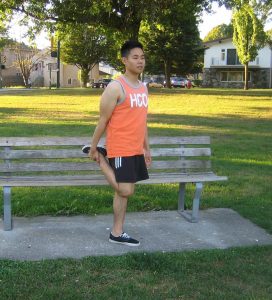Muscle fatigue, injuries and certain medical conditions can eventually cause the hamstring muscles to ache and feel sore. The hamstring muscles are positioned on the rear part of the thigh and responsible for bending the leg, walking, jumping, pedaling and running. Luckily, there are a number of ways to treat and promote the healing of sore hamstrings.
Adequate rest
The most important aspect to start the healing process of a sore hamstring is to rest the muscle. In case the pain occurs during an activity, the individual must stop right away to prevent further pain from occurring. It is recommended to avoid physical activities for the rest of the day and elevate the legs. When elevating the leg, you can utilize pillows, towels or rolled blankets to prop up the legs. The individual must wait for at least 48 hours before engaging in any activity unless allowed by the doctor.
Cold therapy

Ice packs and heat packs can be used to help minimize the pain, redness and swelling. You can utilize an ice pack during the initial 72 hours. Apply an ice pack or frozen vegetables over the affected hamstring for about 30 minutes every 3-4 hours. Make sure that you will hold the ice pack in place using an elastic bandage.
An ice massage can be performed for 5-10 minutes at 3 times in a day. You can also freeze water in a cup and once frozen, hold the base of the cup and rub over the hamstrings in a slow and gentle manner.
Heat therapy
After 2-3 days of using cold therapy as long as there is no swelling or redness, you can utilize heat therapy. You can apply a heating pad, hot water bottle or warm compress over the affected muscles for about 20 minutes in every session for up to 3 times in a day.
The heat works by relaxing and loosening the hamstrings while at the same time reducing the pain. A warm bath also provides the same effect on the sore hamstrings.
Proper stretching
Proper stretching can also help prevent the formation of scar tissue. The individual should move slowly into each stretch until there is a mild stretch and tension. It is vital to stop stretching if there is any pain.
Stretching should not be performed once a torn hamstring muscle is suspected. A beneficial exercise is the standing hamstring stretch. The individual should stand erect with the legs together. The next step is to stoop at the waist and reach up to the floor. Stretch until the individual feels a small, mild tension and hold the stretch for up to 20 seconds.
When to consult a doctor
A doctor can provide the best diagnosis for the sore hamstrings. It is vital to seek medical care if the individual experiences worsening of the symptoms or there is piercing or abrupt pain during activity, loss of circulation, bruising and pain that lasts longer than a week or if a ruptured muscle is suspected. The doctor can develop a treatment plan that usually includes medications and physical therapy to help restore the normal muscular function.
